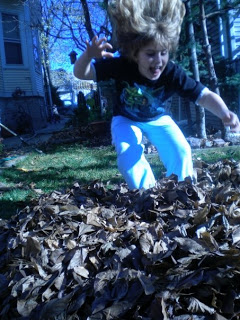
The days are getting shorter, and the nights are getting colder, especially here in the Midwest. Getting your yard ready for the cold months ahead could be very labor intensive and expensive! But it doesn’t have to be. There are some things you should not skip doing, but even doing those things could be done cheaper if you are on a budget. If you are in a warmer climate and would like to share some of your local tips for your climate, please share! Happy raking!
So here is your “shopping” list, though some things you have already in your yard or garage:
Burlap: Do you have tender shrubs or Asian trees in large pots that need to stay out? Do you have tender fruit trees or sensitive shrubs in the ground that don’t do well with the harsh winds really well? Burlap is cheap and can keep these plants warm and protected. Wrap pots with a few layers tied with twine. Loosely wrap shrubs and bushes once they have lost their leaves and tie with twine. When things warm up in March, uncover limbs if hey are covered so they can breath, but keep pots covered until all danger of frost is over. I am trying to winter a gardenia in a large pot, we’ll see if it works out. I amy bring it into the office over the winter too. We’ll see.
Tarp: If you have outdoor furniture or a lot of container pots, they will need protection if you plan on keeping them for years to come. We use tarp with bungee cords to protect some of our furniture. You can spend a lot with nice furniture covers, but tarps work just as well. Also, tarps are a great to wrap your pots once you empty them. Pile them on top of one another upside down. Then use a tarp to protect them so they won’t crack-especially if you don’t have room to bring them into any shelter like a shed, garage or deck.
Leaves for Mulch: Don’t get me wrong, mulch is great for bedding plants. Many townships now even give mulch away for free, so check with your alderman or civic office. But if you have a big yard, mulch can get pricey. Leaves make great mulch, and many mowers now will do it for you on a special setting. We mulch our leaves through our mower and than pour them into our beds. The decompose quicker than mulch, making the soil soft and nitrogen rich. They also keep the beds nice and warm. Honestly, in the past I didn’t even mulch them, but would lay them in whole and they still decomposed. You do need to watch out for disease or mold on leaves. You can spread it into your beds. Also, don’t mound things too deep or you will cause root rot in the spring. We made a huge pile around an arborvitae one year and so much moisture was stuck under that pile that the roots of the bush rotted, so be careful. Spread the leaves evenly and mound slightly around plant bases you wish to protect, but don’t go crazy. I think leaves for mulch is way greener than wood mulch. Also, you will need less leaf bags when raking.
Lawn Winterizer: Fall is good time to get your lawn in shape. You don’t need to worry about drought, and there is plenty of moisture to keep things green. Purchase a winterizer and sprinkle away on the lawn so it can start storing food in it’s roots. Do this after raking up leaves so things get spread evenly.
Epsom Salt: Epsom Salt is a very inexpensive way to get nitrogen into the soil. It strengthens the roots, and fall is all about roots storing food for winter. A good sprinkling all over your lawn and beds with just your hands, tossing here and there will get the roots for all your plants in tip top shape for hibernating time.
Coke: A can of flat Coca Cola can help with decomposition of organic material. The sugars feed the microbes that do the work and the acids also help break down organic materials as well. If you are throwing a lot of your leaves and thatch in your compost bin [or creating a dirt pile from your container pots (see next paragraph)], throw a can of flat coke over it to help break stuff down. On warmer days in the winter, be sure to add some more periodically and come spring, you will have some rich dirt or compost! You can also dilute it in a sprayer to help break down lawn thatch and over the mulch in your beds, too. This is good to do in the spring, too, fyi.
Mini Dirt/Leaf Pile: As mentioned above, you have to empty and protect your pots if you want them to last awhile-particularly ceramic or terra-cotta ones . Water in the dirt, if left in pots, will expand and contract as it ices and melts-causing cracking. The dry air in Winter will eventually break down even plastic pots. Find an unused part of your yard and dump all your pots’ dirt there, layering the pile with mulched leaves and some green glass clippings in between. My husband won’t let me compost in the city (no matter how hard I cry), so this is my poor girl’s low maintenance way to get some nice dirt for my container pots next year. Come spring, this dirt will be all ready to go! And your pots will be, too.
– Posted using BlogPress from my iPad
- Sugar-Free, Low-Carb, Olive Oil Chocolate Hazelnut Tart - February 18, 2023
- Easy Slow Cooker French Onion Soup - November 28, 2022
- Recipe: Chicken Vindaloo with Whole Foods Vindaloo Curry Powder - January 22, 2022




